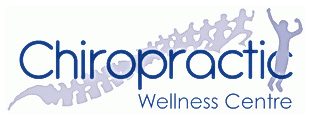Scoliosis
If the spine bends abnormally to the left or right this is a condition called scoliosis. Some people find that the condition does not prevent them from leading a normal life and they can carry on with everyday tasks. However, in some cases the condition can develop and become severe, posing serious health risks for the individual. Spine, chest, pelvic and internal organ damage can occur if it is left untreated.
Cause
For approximately 65% of cases the cause of scoliosis is unknown (referred to as idiopathic scoliosis). However, in many of these cases there is a family history of the condition, which suggests a genetic link. Health conditions that affect the nervous system and muscles, such as cerebral palsy and muscular dystrophy have been found to cause scoliosis. In some adult sufferers, gradual damage to parts of the spine has caused the scoliosis to occur and in very rare cases the condition is present at birth.
Symptoms
Typically the condition causes the appearance of the shoulders, chest or hips to change. You may find one shoulder higher than the other, a shoulder blade which is more prominent and one side of the hip may appear to stick out. Whilst all individuals are different back pain is rare, however if the curvature of the spine worsens then the condition can become painful and muscles near to the site may feel sore and tender.
Solution
The treatment for scoliosis really depends on how severe the curvature of the spine has become. If your posture shows signs of scoliosis we can use an X-ray to examine your spine in more detail and make an accurate assessment.
The focus of our approach to scoliosis is to return the function of the spine where possible and reduce the pain caused by the condition. Improving the function and flexibility of your spine can be achieved through gentle and specific adjustments. We can also advise you on stretching exercises to help strengthen the muscles around your spine to support the chiropractic manipulations.
Chiropractic treatment for scoliosis will work on making you more comfortable and improve the overall function of the spine.
The Hump (Kyphosis)
A healthy spine will naturally have an outward curve at the top, however a curve of more than 60 degrees is considered to be a sign of Kyphosis or “The Hump”. Individuals appear to have a much more rounded top of the spine than normal.
Cause
There are three different types of kyphosis: Postural, Scheuermann’s and Congenital
- Postural kyphosis results from a person’s poor posture pulling the thoracic vertebrae out of position.
- Scheuermann’s kyphosis occurs when the vertebrae do not develop correctly and are weakened, thus resulting in misalignment.
- Congenital kyphosis is caused by abnormal development of the spine in the womb, vertebrae can actually fuse together.
Symptoms
In a majority of cases the main symptom of kyphosis is a pronounced hunch at the top of the back. Sometimes the condition can cause a stiff and painful back, tiredness and tenderness around the spine. If the kyphosis is severe the symptoms may worsen over time. In rare cases it can affect breathing and eating.
Solution
In order to treat kyphosis we will first assess the severity of the hump through a physical examination and if required an x-ray. Once we have established a clear understanding of your individual circumstances and identified the cause of the kyphosis we will create a specific treatment program. The plan will involve spinal adjustments to improve the information flow to and from the central nervous system and mobilise the joints in the affected area. If you suffer from postural kyphosis we will be able to suggest suitable exercises to improve your posture, balance and core strength.
Forward head posture
Forward heard posture refers to a condition where a person’s head is positioned in front of their shoulders, rather than directly above. Due to the changes in our modern day lifestyles this condition has seen a recent increase in cases, primarily due to poor posture when using computers, mobile phones, tablets and laptops in and out of work.
Cause
When using electronic devices, the habit many people have developed is to drop our heads forward, this rounds the shoulders and results in forward head posture. Other contributing factors can be due to sleeping with too many pillows or from lack of developed muscle in the back.
Symptoms
Individuals suffering from forward head posture place excessive strain on the muscles in their neck and back. Research has indicated that for every extra inch that your head sits forward of your shoulders, the head gains an additional 10 pounds in weight.
In order to stop your head from dropping forward the muscles in the neck and back must work exceptionally hard, placing them under strain. This causes pressure at the base of the skull causing headaches, pain between the shoulder blades and tingling in the arms. In severe cases forward head posture limits your ability to breath effectively and restricts the movement of your ribs, this has a knock on effect on the function of your heart and lungs.
Solution
The first stage with any chiropractic treatment is a thorough examination of your condition; once you are happy with the diagnosis and all aspects of the proposed treatment plan we will begin to realign your spine into the correct position. Relaxing the muscles that have been affected through gentle and targeted manipulations will help relieve much of the pain and discomfort associated with the condition. Importantly we will then advise you on the correct neck and shoulder posture and the type of exercises that will help to prevent you from adopting weak postural conditions in the future.


